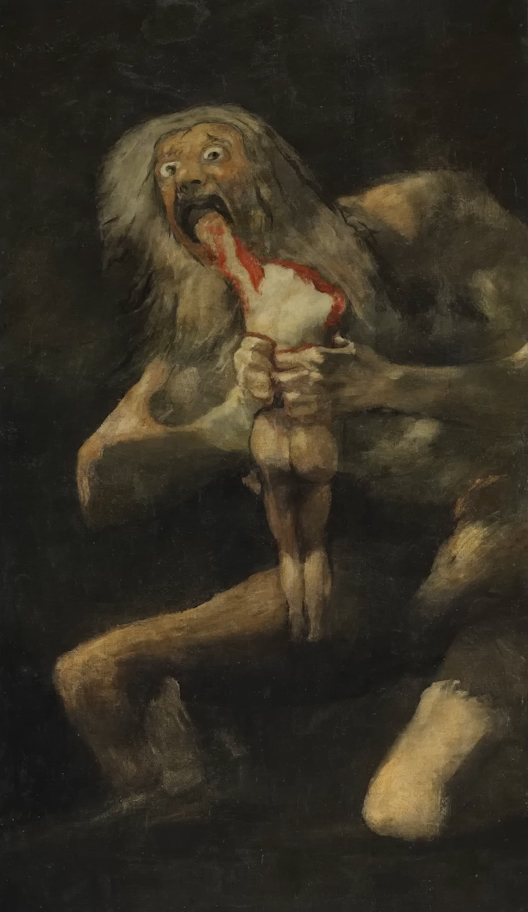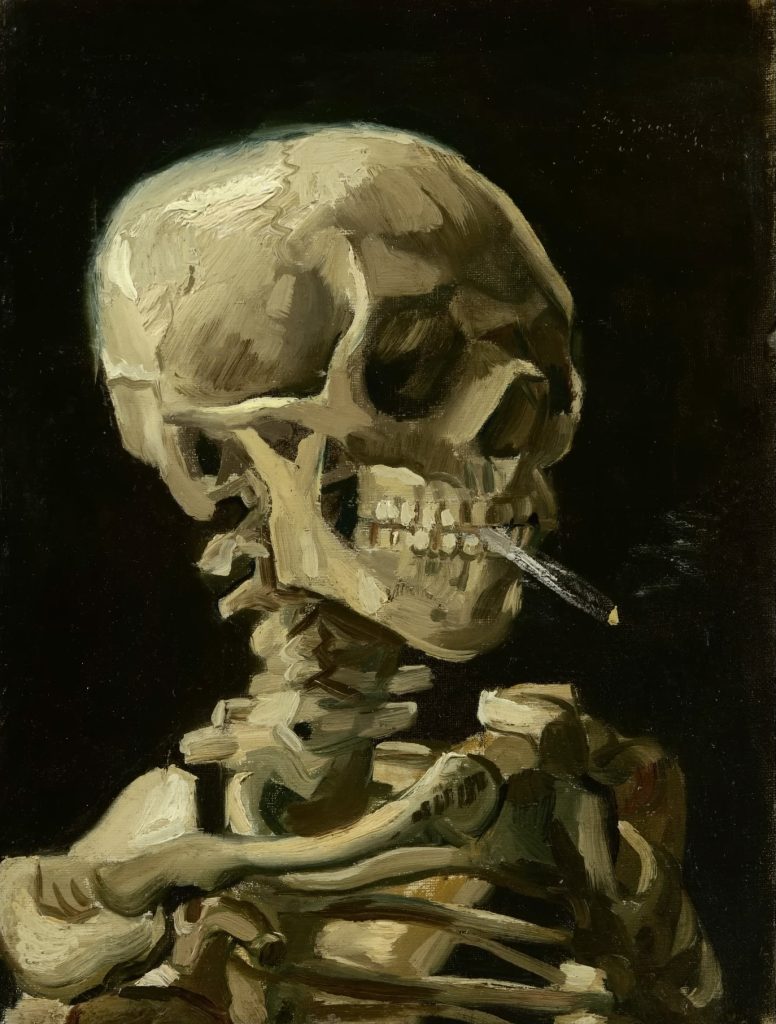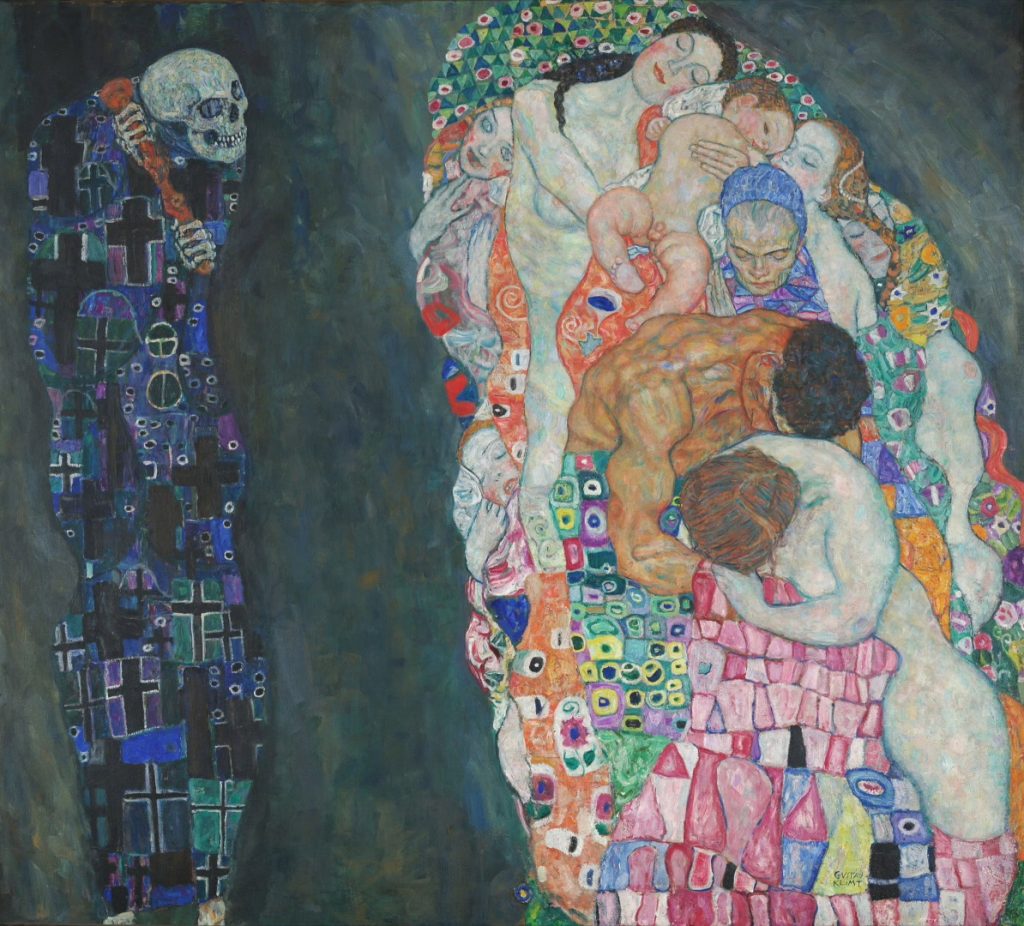
Art has a unique way of capturing the depths of human emotion, and dark paintings often delve into themes of despair, tragedy, and the macabre.
These works challenge viewers to confront uncomfortable truths and explore the shadows that lurk within the human experience.
From haunting imagery to unsettling narratives, dark paintings have left an indelible mark on the art world.
In this exploration of the ten most famous dark paintings, we uncover the stories behind these masterpieces and the artists who created them.
Each piece not only reflects the artist’s vision but also serves as a mirror to society’s darker aspects.
Prepare to journey through a world where beauty intertwines with darkness, revealing the profound impact these artworks continue to have on audiences today.
1. Saturn Devouring His Son – Francisco Goya

Saturn Devouring His Son, painted by Francisco Goya around 1819 to 1823, vividly portrays the mythological figure Saturn, driven by fear and madness.
Goya depicts Saturn devouring one of his children in a disturbing, grotesque manner, symbolizing the destructive nature of power and the fears that accompany it.
The dark, claustrophobic atmosphere enhances the painting’s unsettling impact, capturing Goya’s own struggles with mental anguish. This masterpiece remains a striking commentary on the brutality of tyranny and the complexities of parental love.
2. The Nightmare – Henry Fuseli

“The Nightmare,” created by Henry Fuseli in 1781, portrays a woman in a deep sleep, overshadowed by a demonic figure.
This striking painting captures the essence of fear and the subconscious, as her posture suggests vulnerability and terror.
The ghostly horse, often interpreted as a symbol of anxiety, adds to the nightmarish scene. Fuseli’s use of dramatic lighting enhances the work’s eerie atmosphere, inviting viewers to explore their own fears.
This masterpiece challenges perceptions of dreams and nightmares, reflecting the darker side of human imagination.
3. Dante And Virgil – William-Adolphe Bouguereau

“Dante and Virgil,” painted by William-Adolphe Bouguereau in 1850, illustrates a vivid moment from Dante Alighieri’s “Divine Comedy.” It depicts the poets, Dante and Virgil, during their descent into Hell.
The figures exhibit deep expressions of contemplation and despair, reflecting the emotional weight of their journey. Bouguereau’s masterful use of light and shadow accentuates their somber surroundings, enhancing the painting’s dark themes of sin and redemption.
This masterpiece invites viewers to engage with the profound exploration of morality and humanity’s struggles.
4. Skull With A Burning Cigarette – Van Gogh

Van Gogh’s “Skull With A Burning Cigarette,” painted in 1886, embodies a haunting exploration of mortality. The skull, sitting ominously with a cigarette perpetually alight, symbolizes the inevitable confrontation with death.
This stark imagery prompts introspection about the transient nature of life. Van Gogh’s bold brushstrokes and somber color palette enhance the painting’s haunting feel, inviting viewers to reflect on their own existence and the tension between life and death, ultimately highlighting the artist’s deep emotional struggles.
5. The Face Of War – Salvador Dalí

“The Face of War,” painted by Salvador Dalí in 1940, starkly illustrates the horrors of war. The central skull, enveloped in an atmosphere of desolation, evokes a haunting sense of chaos and despair.
Dalí’s meticulous attention to detail accentuates the grotesque features, embodying the psychological scars left by conflict.
The agonized faces emerging from the skull emphasize human suffering, making the viewer confront the devastating impact of war.
This poignant artwork serves as a powerful reminder of trauma’s reality, reflecting Dalí’s deep engagement with existential themes.
6. Hell – Hieronymus Bosch

“Hell,” painted by Hieronymus Bosch in the late 15th century, immerses viewers in an intricate depiction of eternal damnation.
The triptych showcases nightmarish scenes filled with bizarre creatures and tormented souls, highlighting humanity’s vices.
Bosch uses vivid colors and chaotic composition to reveal the consequences of moral failings. Each panel unfolds a narrative of sin and punishment, inviting audiences to contemplate their own actions.
Bosch’s masterful imagination crafts a compelling visual commentary on the human condition and its darkest instincts, making “Hell” a timeless warning against vice.
7. Death And Life – Gustav Klimt

Klimt’s “Death and Life,” painted between 1910 and 1915, contrasts life’s vibrancy with the inevitability of death. It depicts a serene figure representing life, embraced by a looming figure of death, highlighting mortality’s impact on human existence.
The rich golden hues symbolize vitality, while the swirling patterns create a sense of movement and tension.
Klimt’s intricate details and emotive expressions invite viewers to reflect on the relationship between life and death, encapsulating the duality of human experience with profound elegance.
8. Triptych of Earthly Vanity and Divine Salvation – Hans Memling
Memling’s “Triptych of Earthly Vanity and Divine Salvation,” completed around 1485, presents a profound allegory of mortality.
The left panel depicts a lavish court scene, symbolizing earthly pleasures and vanity, contrasting sharply with the right panel’s vision of divine salvation.
Central features a crucified Christ, urging viewers to reflect on their spiritual journey. Memling’s intricate details and vivid colors enhance the thematic tension between sin and redemption, compelling audiences to contemplate their life choices and the fleeting nature of material wealth.
9. Judith Beheading Holofernes – Caravaggio

Caravaggio’s “Judith Beheading Holofernes,” painted in 1598-1599, showcases a dramatic scene from the biblical story.
Blood flows as Judith, embodying courage, decapitates the Assyrian general Holofernes, highlighting themes of female empowerment and violence.
Caravaggio’s stark contrast of light and shadow emphasizes the intensity of the moment, drawing viewers into the visceral struggle.
The expressions of both Judith and her maidservant convey a mixture of determination and horror, making this painting a powerful exploration of morality and the human condition.
10. The Library – Félicien Rops
Félicien Rops’ “The Library,” painted in 1885, reveals a dark and voyeuristic world filled with sensuality and temptation. The artwork features a woman surrounded by books, embodying knowledge and desire.
Rops uses imaginative symbolism to explore the tension between intellectuality and eroticism, inviting viewers to contemplate the allure of forbidden knowledge.
The intricate details and dim lighting enhance the unsettling atmosphere, presenting a stark reflection on societal norms regarding desire and intellect, making it a captivating example of dark art’s influence.






